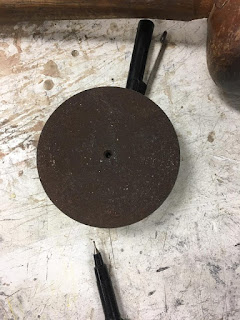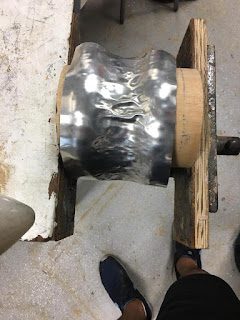The Blister

Step 1: To make the blister, once again we had to split up into groups in a similar fashion to the tray. I was with the same partner so it made the process of communication very easy. This time our projects did not have to match, rather it was a case of not enough material therefore we had to share resources. Step 2: Three to four people had to share a large sheet of material. we had to use a scribe and ruler once again to measure a piece of metal that fit on top of the stencil we were about to use in our group work. The metal had to be about 50mm more on every side to allow for shrinking and expansion. This piece was then cut on the guillotine. Step 3: My partner and i selected the template of a teardrop that we wanted to use. There was a selection of over thirty, however we chose number FIFTEEN (15), which was largish type water drop. These templates were created and cut using the CNC laser cutter in the backroom of the workshop. Step 4: My partner and i had to take...

